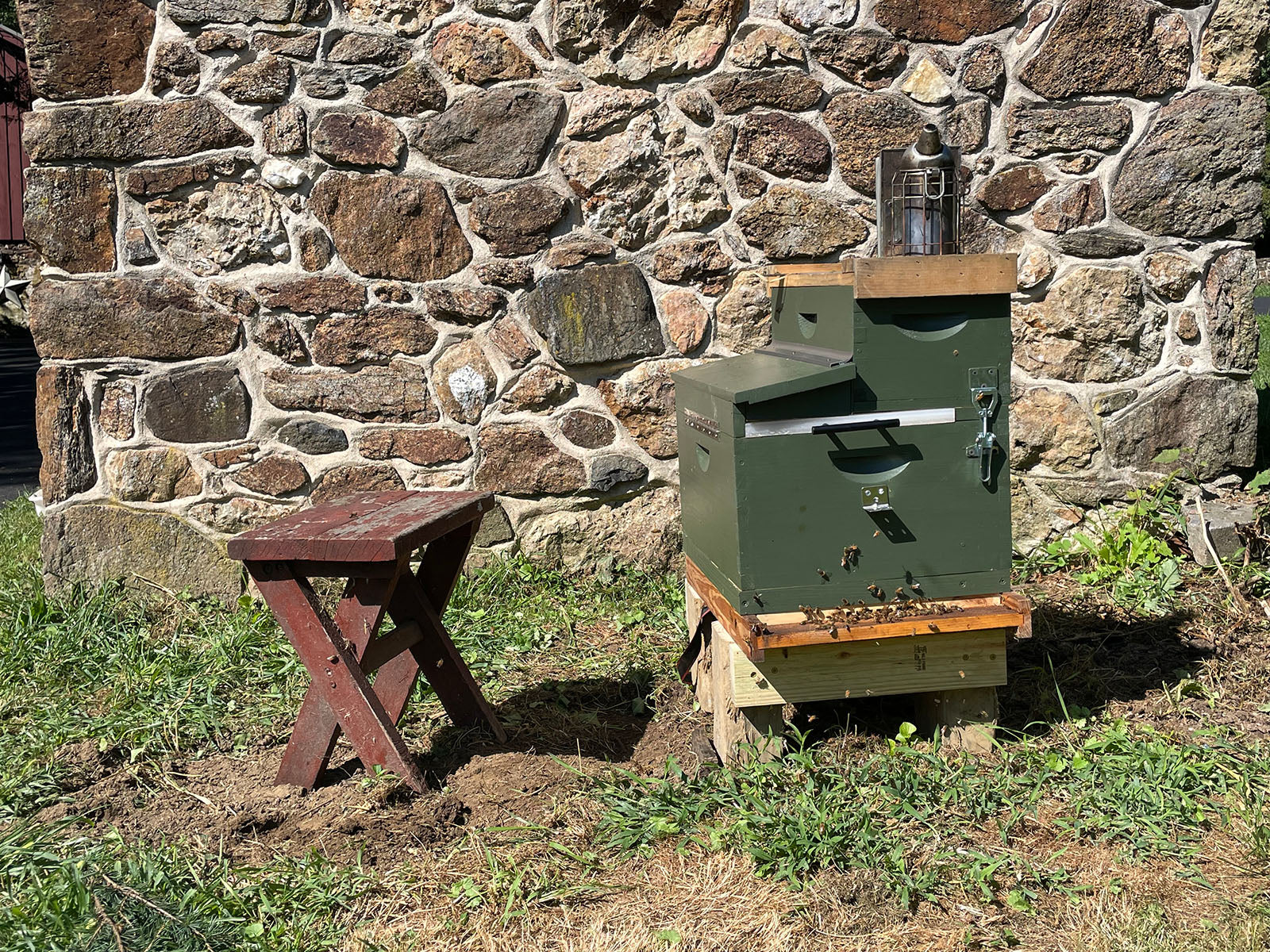
The Ideal Hive For New Beekeepers
See Why The One Queen Keeper Makes Learning So Much Easier:
Where To Begin?
If you are interested in beekeeping and wondering how to get started, it’s normal to be a little overwhelmed. There are well-established hive systems that have been in use for hundreds of years, but beekeepers love to experiment and innovative new designs are constantly being introduced. The benefits of one system vs another can be very subjective and depend greatly on a beekeeper’s goals, local ecosystem, and hive management preferences. We don't believe in "hive bullying" at The Keeper's Hive and respect everyone's choices, but it's important for new beekeepers to understand the pros and cons of different systems so that they can make an informed decision.
First Things First: Start Local With An Apprenticeship Or Mentor
Before you dive into shopping for hives and managing your own honey bee colonies, we highly recommend finding an experienced beekeeper in your area to learn from. An apprenticeship or mentor can teach you the ropes and help you determine if you're comfortable around buzzing hives and OK with the occasional sting. It's better to discover if beekeeping really suits you before investing over $1,000 into equipment. Not only that, but honey bee management best practices can vary greatly from region to region. Beekeeping is a highly local endeavor, so find the closest club or association and reach out!
The One Queen Keeper has been described as the easiest to use vertically-oriented hive design on the market. Colony management without heavy lifting is just the tip of the iceberg.
Choosing The Right Hive
Selecting the right hive type is a significant decision, as it will have a major impact on your experience with beekeeping. Most beekeepers opt for the Langstroth hive (or extremely similar variations) due to the fact that it has withstood the test of time and educational resources are widely available. Not only that, but components are standardized and relatively inexpensive.
So what's the catch? Well, performing regular colony management requires a lot of lifting! Many non-beekeepers don't realize how heavy Langstroth boxes can get. 8 and 10 frame boxes can weigh anywhere from 40-90 pounds, and they have to be removed whenever a beekeeper needs to get into the hive (approx. every 1 to 2 weeks).
Master These Three Tasks for Sustainable Beekeeping
Why does a beekeeper need to open up their hives? Simply put, if colony management is neglected the colony will weaken and eventually die. Remember - honey bees are not native to most of the world, and they are susceptible to disease. To become a successful beekeeper, you'll want to focus on three essential areas that will help your colonies thrive and save you from having to buy new bees every year:
Swarm Prevention: Preventing your bees from swarming is key. When bees swarm, the queen takes most of the colony with her to find a new place to call home. There's only about a 15% chance that they'll establish a new hive, and most usually dwindle and die. The bees that are left in your hive will raise a new queen, but because of the smaller population they are more vulnerable to pests and disease. Not to mention, they will make much less honey than a hive that is still full of bees.
Mite Management: Varroa mites are one of the biggest threats to honey bee colonies, because they transmit disease. High mite levels often lead to increased virus levels, which can be deadly. Monitoring for mites and taking appropriate action as early as possible can be a matter of life and death for your colony.
Optimal Nutrition: Natural forage can provide sufficient pollen and nectar in many areas, but in some regions (or during certain weather conditions) you may need to supplement their diet. Knowing how, when, and what to feed is important for your colony's wellbeing.
The One Queen Keeper makes colony management easy, efficient, and most importantly, effective. If we had to add another "e" word, it would definitely be enjoyable.
Unparalleled Swarm Prevention. Effortless Colony Care.
We designed The Keeper's Hive to help you tackle these three tasks with remarkable ease and efficiency. Not only is our hive Langstroth compatible, it also makes preventing swarms, checking mite levels, and feeding your colony easier than any other hive design to date.
By eliminating the need to lift any boxes in order to access the brood chamber (where the queen lives and the health of the colony is assessed), we've given beekeepers immediate access to the heart of the hive. Even just flipping open the roof and peering into the brood chamber through the observation window can give you a lot of information about how the colony is doing. Treatments and nutrition can be administered directly to the bees in minutes. The Demaree method for swarm control, one of the most effective swarm prevention techniques there is, can be performed in short order and without breaking a sweat.
The single brood chamber is another reason our hives stand out from the rest. With most Langstroth setups, the queen can move freely between the 2-3 boxes at the bottom of the hive. Limiting the queen to just one box has many benefits, but because it requires a lot more lifting to prevent swarming many beekeepers never try it. With The Keeper's Hive, you can enjoy all of the upsides of single brood chamber management without the added lifting.
As always, we encourage everyone to do their own research and decide what works best for them. Some may be concerned that our hives have not been as widely used as others, but remember: at their core they are fundamentally the same as Langstroth - just without the lift! We think that the more you learn about beekeeping the more you will find that our system makes a heck of a lot of sense.
-George, Nat, and Dave
